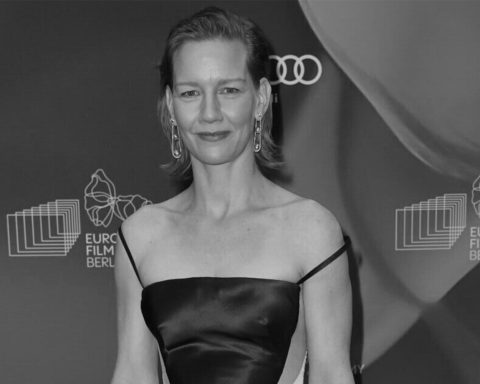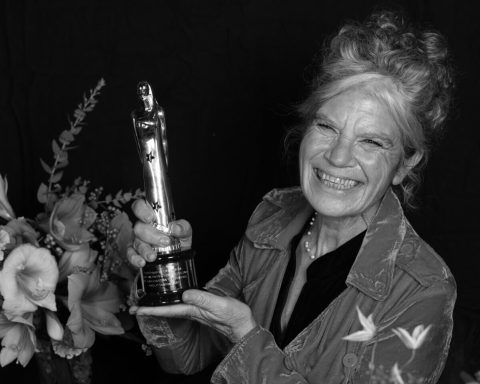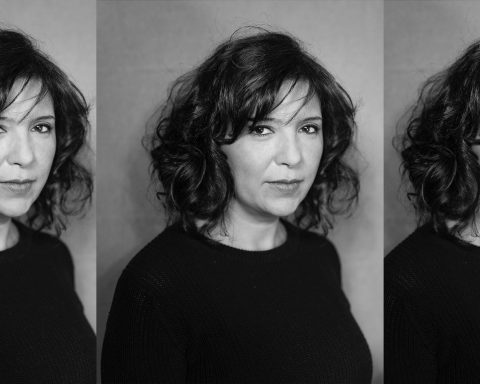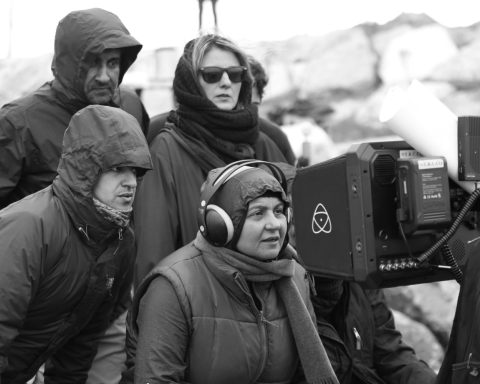Erika Cohn is an Emmy and Peabody Award-winning director/producer who Variety recognized as one of 2017’s top documentary filmmakers to watch. Most recently, Erika completed “The Judge,” a Peabody Award-winning documentary film that premiered at the 2017 Toronto International Film Festival and was broadcast on PBS’ 2018 Independent Lens series. Erika co-directed/produced, “In Football We Trust,” an Emmy award-winning documentary, which premiered at the 2015 Sundance Film Festival and broadcast on PBS’ 2016 Independent Lens series. Her work has been supported by IFP, the Sundance Institute, Tribeca Institute, Hot Docs, Sheffield, ITVS, Women in Film, BAVC and the CPB Producer’s Academy among others.
Tara Karajica talks to Erika Cohn about her latest film, “Belly of the Beast,” that intimately chronicles the journey of women fighting reproductive injustice in their communities and that is screening at the 2020 Double Exposure Film Festival.
How did you get into filmmaking, especially investigative reporting/documentary?
Erika Cohn: I grew up in Salt Lake City, Utah and started attending the Sundance Film Festival at a young age, where I fell in love with independent film. I deeply felt the power of cinema and craved the feeling of being transported into different worlds for a couple of hours. I was fifteen when I made my first film, mentored by a local youth media program in conjunction with the Sundance Institute. At the time, I was struggling with how to self-identify as a non-Mormon, Jewish girl, coming from an interfaith family in a city where faith defines who a person is. Film became a catalyst for me to express my frustrations with socio-cultural-religious alienation and heal intergenerational wounds. After this experience, I became committed to providing a platform for untold stories to be told. It’s a great privilege to be a storyteller, which comes with tremendous responsibility. I do not take this lightly. I’m driven to using Cinema to move audiences to a more just world.
How did Belly of the Beast come about? When did you first hear about these sterilizations? How and at what point did you decide to go from advocate to filmmaker/reporter and to tell this story?
E.C.: Attorney Cynthia Chandler and I first met in 2010. I was incredibly inspired by her compassionate release work and intrigued by Justice Now, one of the only – if not the only – U.S. organizations with board members in prison. I was haunted by their “let our families have a future” campaign, which exposed the multiple ways prisons destroy the human right to family, one of the most heinous being the illegal sterilizations primarily targeting women of color. This screamed eugenics. As a Jewish woman, the phrase “never again” was always profoundly in the back of my mind. When I learned about this different kind of genocide happening through imprisonment, through forced sterilization behind bars, I knew I had to get involved. Cynthia invited me to volunteer for Justice Now and I became a volunteer legal advocate, providing direct service needs for over a hundred fifty people in California’s women’s prisons. From there, I began working with people inside on a project that would become Belly of the Beast. Without their mentorship, support and wisdom, this film would not exist.
Can you talk about the title of the film?
E.C.: The film’s title initially came from an interview with an incredible activist Kanoa, a Hawaiian, African American Transgender Man, inside Central California Women’s Facility (CCWF). He was an early champion and advisor to the film, in addition to also being a survivor of forced sterilization. When he spoke about the sterilizations and the horrific abuses inside California’s women’s prisons, he said: “We are inside the belly of the beast…When they say California Department of Correction is the belly of the beast, it’s literal…” I was profoundly struck by the power, poetry and pain in his words and asked other survivors how they felt about the potential title, which provoked so much discussion about systemic racism as the beast and whose wombs are valued in our society. We all knew the title was the right fit.
You provide a lot of context to the sterilizations and eugenics in California. What prompted you to learn about all this and to educate us as well?
E.C.: I didn’t want the sterilizations in California’s women’s prisons to be viewed as an isolated incident. It was important to me that audiences learned about the legacy of forced sterilization in the U.S. and how it is deeply rooted in white supremacy.
When many of us think of eugenics, we think of the Holocaust…Nazi Germany. Yet many of us don’t know that the eugenics movement was actually born in the United States and that Nazi Germany came to California to learn from our eugenics policies. California had the most notorious sterilization program in the United States having sterilized over 20,000 people between 1909 and 1979. Nearly one-third of all of the forced sterilizations in the U.S. were performed in California. Throughout the 20th Century, over thirty States passed eugenics laws, some of which remained on the books well into the 1970s, and in some States the 1980s. Compulsory sterilization targeted those who were seen as “undesirable” people, people who were poor, women who became pregnant out of wedlock, people with disabilities, people in prison, and people of color. Women of color were the most impacted.
I think it’s also important to note that we are coming up on the one-hundred-year anniversary of the infamous 1927 Supreme Court Case – Buck v. Bell, which upheld a statute instituting compulsory sterilization “of the unfit for the protection and health of the state,” and set a precedent for States to legally sterilize people in prisons. While state, federal and international law explicitly ban compulsory sterilization, this decision has yet to be overturned.
In that sense, how long have the abuses and sterilizations been going on before all this came to light?
E.C.: I have spent the past decade examining the human rights abuses, including forced sterilization, in California’s women’s prisons as both a volunteer legal advocate and as a filmmaker and have experienced the levels of secrecy and privacy institutions hide behind. Which makes it incredibly difficult to uncover abuses of power and state sponsored violence. California officially apologized for their eugenics past in 2003, yet were still sterilizing people in women’s prisons until 2013 when the Center for Investigative Reporting released their groundbreaking reporting surrounding illegal tubal ligations between 2006 and 2010. Some of the recent survivors still to this day don’t know they were sterilized. We need accountability for these eugenic practices, justice for the survivors and safeguards to prevent future abuses.
I am interested in the fact that you don’t particularly dwell on the doctors who have performed these surgeries, you don’t name them, apart from one – James Heinrich, who also appears in articles I’ve read when I researched this topic. Can you elaborate on this choice and how it is linked to the fact that racism in healthcare is systemic and institutionalized?
E.C.: I wanted to make it clear that it wasn’t just one doctor, one prison official, one bad apple perpetrating these abuses… It was the whole system. Today, we are witnessing population control and systemic racism through policing, imprisonment, the immigration detention system and lack of access to healthcare. I really believe if we hold our institutions and State actors who have committed harm accountable, we can prevent future abuses from happening.
Talking about institutions, how do the California Department of Corrections and Rehabilitation and the Federal Receiver’s Office explain how have these sterilizations been happening? Who is held accountable and what steps are being undertaken to punish the perpetrators and change the laws?
E.C.: There are so many layers of approval required for each medical procedure. Because California’s prison health care system was so horrendous, it was placed under Federal Receivership in 2006. As you see in the film, the Federal Receiver says: “We didn’t know what we were paying for,” yet they had to sign off on and pay for each procedure. CDCR says the procedures were performed outside of the prison to evade culpability.
Despite a bill being passed in 2014, rendering sterilization for the purpose of birth control illegal, which was really just to highlight that it was already illegal according to state, federal and international law, justice has not been served. Right now, there’s actually a petition for reparations for California’s forced sterilization survivors and you can find it on our website: bellyofthebeastfilm.com. I believe that this will not only continue to make amends for historical sterilization abuse following in the footsteps of North Carolina and Virginia, the first two States to pass reparations for sterilizations survivors, but also to ensure accountability for modern day instances of forced sterilization, like what happened in California’s women’s prisons and what has just been uncovered in the ICE detention center in Georgia.
In that regard, is it because the American Justice System is viewed through the lens of crime and punishment that these abuses have been able to happen? Does this mean that the “Rehabilitation” part does not actually exist?
E.C.: I believe imprisonment itself destroys the basic and fundamental human right to family. The illegal sterilizations are simply another mechanism to do so.
Can you talk about Kelli Dillon and Cynthia Chandler? How do you see them? When did they first get empowered to do what they are doing to fight for the rights of these women, raise awareness and change things? What have they achieved so far?
E.C.: Kelli Dillon and Cynthia Chandler are collaborators, dear friends and colleagues. I’m in awe of their brilliance, resilience and creativity. I am endlessly grateful to Kelli and Cynthia for allowing me to journey alongside them and to Courtney Hooks and the Justice Now team for revealing years of their David and Goliath battle on camera.
I described earlier how Cynthia and I first met… A few years later, I had the privilege of meeting Kelli Dillon in Los Angeles, where she was working as a community intervention specialist on domestic violence prevention and gang intervention. We began collaborating on a variety of projects, including Belly of the Beast, which she first became involved in as one of the film’s advisors. Then, after the Center for Investigative Reporting’s (CIR) series of articles catapulted the sterilization abuse into a national conversation, ultimately leading to a series of hearings in the California State Legislature, Kelli’s role in the film changed. The movement was calling for her to yet again share her experiences… This time, as a survivor testifying on behalf of others, to prevent the illegal sterilizations from continuing to happen. Belly of the Beast began centering around her story, and as we reveal in the film, Kelli’s discovery about what happened to her catalyzed Justice Now to begin investigating these abuses in prison. Had it not been for her bravery in speaking out and selfless advocacy for other survivors, this issue wouldn’t have been exposed in the first place. Kelli said: “Once I started to realize how many others were affected, I became passionate about making sure this doesn’t continue to happen to other people. I think that the work kind of found me, drew me in. Fighting against the California Department of Corrections in seeking justice for myself, gave me the fearlessness and courage to continue fighting. Walking through that myself, along with an amazing team at Justice Now, provided the tools and the support that’s needed for other survivors who are walking through that now. I want to ensure that #1 the sterilization abuse is exposed and stopped and #2 to make sure that the survivors receive some type of justice and compensation for what they’ve gone through.”
What impact do you think the film will have in terms of raising awareness, reminding people of this story and helping Kelli and Cynthia and all these women in their fight?
E.C.: We are literally at the precipice of creating lasting change… We have to confront our eugenic history and prevent a new genocide from occurring.
Belly of the Beast has an almost all-female crew. Can you talk about that?
E.C.: True! We have a pretty amazing team! I don’t think much else needs to be said beyond that.
How did Mary J. Blige get on board to sing the end credits song?
E.C.: In conversation with many people inside California’s women’s prisons, we decided that Mary J. Blige would be the perfect artist to approach to be the musical voice of the film. Our brilliant music supervisor, Tracy McKnight, sent Mary J. Blige the film and she loved the project. It was truly an honor to collaborate with her and her co-writers, Nova Wav and DJ Camper.
There has been so much talk about the situation of women in the film industry in the past three years. What is your opinion on the matter? How is it in the US now?
E.C.: There is tremendous privilege surrounding who gets to tell what stories in our industry. While there is increased awareness about gender discrimination and structural racism with our film and documentary world, there needs to be action, specifically from white filmmakers and decision makers. Those with hiring power and/or access to funding can create change — hire women of color in leadership and executive roles, fund projects made by filmmakers of color. For those of us without that power and access, let’s collectively put pressure on those who do. In addition, watch, support, and share films made by filmmakers of color. Listen to women of color.
Do you have a favorite female filmmaker and a favorite film by a female filmmaker?
E.C.: It’s impossible to identify just one, many of my favorite films are directed by women. In my documentary work, I’ve been really inspired by Kim Longinotto. The intimacy and cinema-vérité style of her films have greatly influenced my creative approach.
Times are uncertain now, but do you have anything in the pipeline for when times are better?
E.C.: Yes! I can’t talk the upcoming projects yet, but I would like to offer a few thoughts on the uncertainty of this moment… None of us have the answers. There isn’t one right way to do things. I think so many of us are still mourning the loss of film festivals and theatrical/non-theatrical screenings as we knew them before COVID19, concerned about what the future distribution landscape looks like, and agonizing over how production has been stalled or curtailed. If and when we can let go of this uncertainty, I believe there is tremendous opportunity to reimagine what our industry could look like and therefore shift paradigms within our film community. Though sometimes painful, I am trying to reframe what success looks like, and it’s incredibly empowering.
This interview was conducted at the 2020 (virtual) Double Exposure Film Festival.







